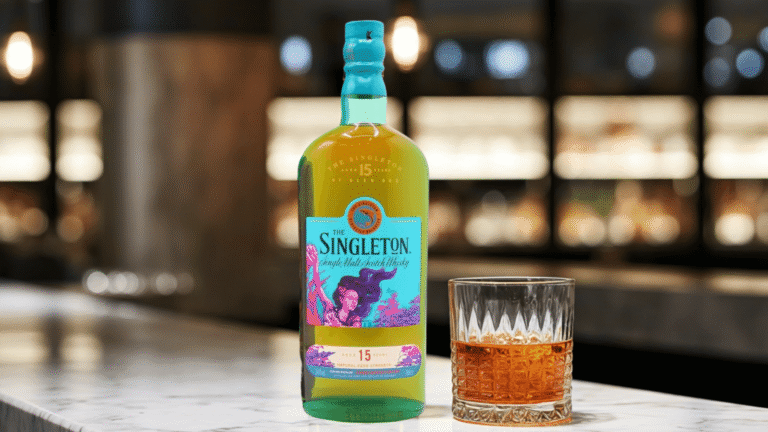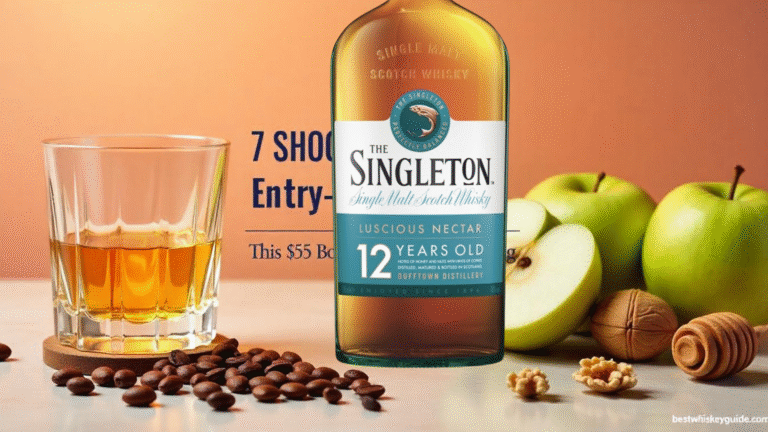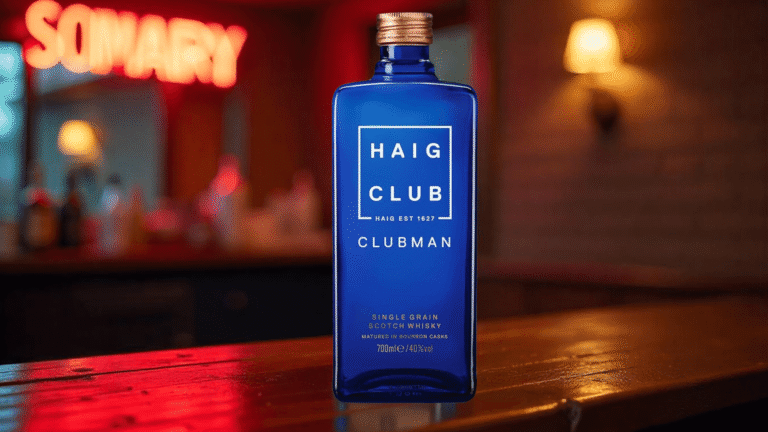Old Forester 1920 Review: This high-proof bourbon (115 proof/57.5% ABV) comes from one of Kentucky's oldest distilleries. The whiskey offers cherry, chocolate, and maple flavors with a warm finish. Old Forester created this bourbon to match the proof of their Prohibition-era medicinal whiskey. The bottle costs $55-75 and has won multiple awards, including a Double Gold Medal at the 2020 San Francisco World Spirits Competition.
In This Old Forester 1920 Review
History and Production
The Old Forester brand made history in 1870 as America's first bottled bourbon, introducing sealed bottles to prevent tampering. During Prohibition, Spirits Network reports that the distillery held one of only six Kentucky permits for producing medicinal whiskey.
Prohibition Era Significance
During Prohibition, medicinal whiskey required bottling at 100 proof. The aging process caused natural evaporation, known as the "angel's share," which resulted in whiskey reaching approximately 115 proof by bottling time. This historical detail inspired the modern 1920's proof level, creating a direct connection to the brand's past.
Production Details
The production process, as detailed by Breaking Bourbon, maintains consistency through:
- Standard Old Forester mash bill
- Traditional yeast strain
- Copper column still distillation
- New charred American white oak barrels
- Temperature-controlled aging warehouses
Barrel Selection Process
The Brown-Forman Cooperage supplies all barrels for Old Forester 1920. This practice ensures quality control throughout production. The barrels contribute over half of the bourbon's flavor and all of its color, making barrel selection crucial for the final product.
Tasting Profile

Nose
The aroma presents layers of:
- Cherry preserves
- Dark chocolate
- Maple syrup
- Oak notes
- Brown sugar
- Subtle spearmint
- Banana undertones
- Cedar wood
- Warm cinnamon
Taste
Film Whiskey's review notes these flavors:
- Rich caramel
- Graham cracker sweetness
- Green peppercorn
- Dark chocolate
- Yellow cake
- Cherry notes
- Malt nuttiness
- Simple syrup sweetness
- Barrel char characteristics
Finish
Bourbon Obsessed describes a lengthy finish featuring:
- Toasted marshmallow
- Dark chocolate
- Graham cracker sweetness
- Black pepper
- Pleasant char
- Warming sensation
- Tart apple crispness
- Lingering smoky notes
- Oak tannins
Serving Suggestions
Neat
The high proof makes this bourbon perfect for neat sipping, especially after resting in the glass for 5-10 minutes. This rest period allows the alcohol to open up, revealing deeper flavors.
On the Rocks
Adding ice can help tame the high proof while maintaining the rich flavor profile. The cold temperature brings out different aspects of the whiskey, particularly the fruity and sweet notes.
In Cocktails
The high proof and rich flavor profile make this bourbon excellent for:
- Old Fashioned cocktails
- Manhattan variations
- Whiskey sours
- Boulevardiers
- Bold highballs
Recognition
The bourbon has earned significant praise, including:
- Double Gold Medal at the 2020 San Francisco World Spirits Competition
- Gold Medal at the 2023 San Francisco World Spirits Competition
- Judge's Choice Award at the 2018 American Whiskey Convention
- 93 points at the 2017 Ultimate Spirits Challenge
- Silver Medal at the 2017 International Whisky Competition




Value and Availability
Total Wine typically prices Old Forester 1920 between $55-75 for a 750ml bottle, varying by location. This price point places it in the premium bourbon category while remaining accessible compared to limited releases.
Market Position
The bourbon maintains consistent availability in most markets, making it a reliable choice for both casual consumers and collectors. Its price-to-quality ratio receives praise from many reviewers and enthusiasts.
Comparative Analysis
When compared to similar high-proof options, The Whiskey Shelf's comparison notes:
vs. Knob Creek Single Barrel
- Knob Creek shows darker, denser characteristics with prominent brown sugar
- Old Forester 1920 presents brighter with honey and fruit notes
- Both maintain high proof but express different flavor profiles
vs. Stagg Jr.
- Stagg Jr. offers more oak influence and overall intensity
- Old Forester 1920 provides more balanced sweetness
- Both appeal to high-proof bourbon enthusiasts
vs. Wilderness Trail
Wilderness Trail barrel proof bourbons share similar dry fruit characteristics but differ in:
- Age statement
- Grain composition
- Production methods
Storage and Serving Recommendations
Storage
- Keep bottle upright to protect the cork
- Store in a cool, dark place
- Avoid direct sunlight
- Maintain consistent temperature
Optimal Serving
- Serve at room temperature
- Allow 5-10 minutes rest after pouring
- Consider adding a few drops of water to open up flavors
- Use a Glencairn glass or similar whiskey glass for best results
Old Forester 1920 Review Final Assessment
Old Forester 1920 delivers consistent quality and historical significance at a fair price point. It serves well neat, on ice, or in cocktails, making it versatile for different drinking preferences. The high proof and rich flavor profile make it particularly appealing for those who enjoy full-bodied bourbon expressions.
According to Bourbonr's review, while some might hesitate at first due to the high proof, the bourbon often exceeds expectations with its depth and character. The balanced combination of sweetness, spice, and oak creates an experience that works well for both seasoned bourbon enthusiasts and those exploring higher-proof spirits.
The consistent availability, historical connection, and quality make this bourbon a valuable addition to any whiskey collection. Its performance in competitions and positive reviews across multiple sources confirm its position as a standout in the premium bourbon category.




